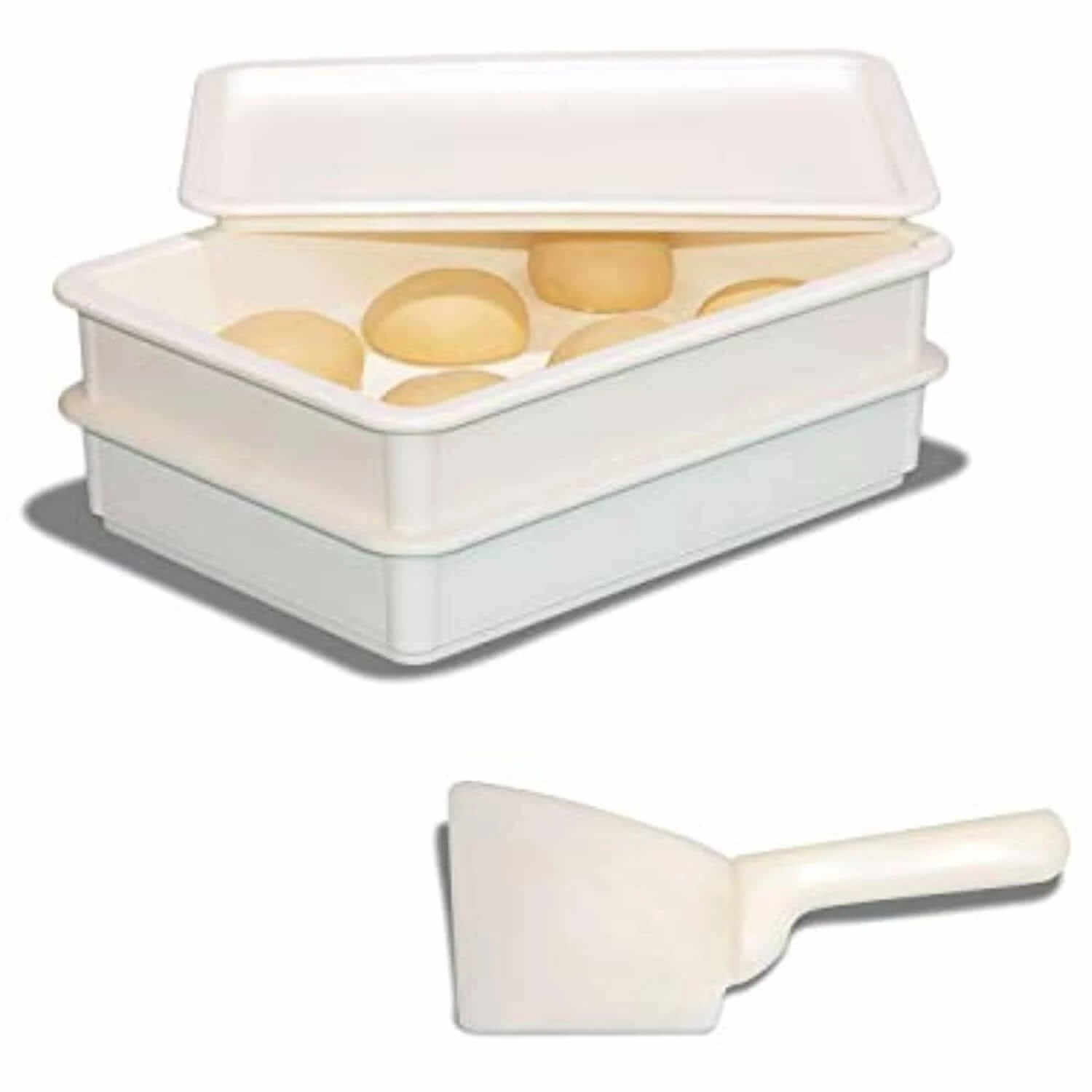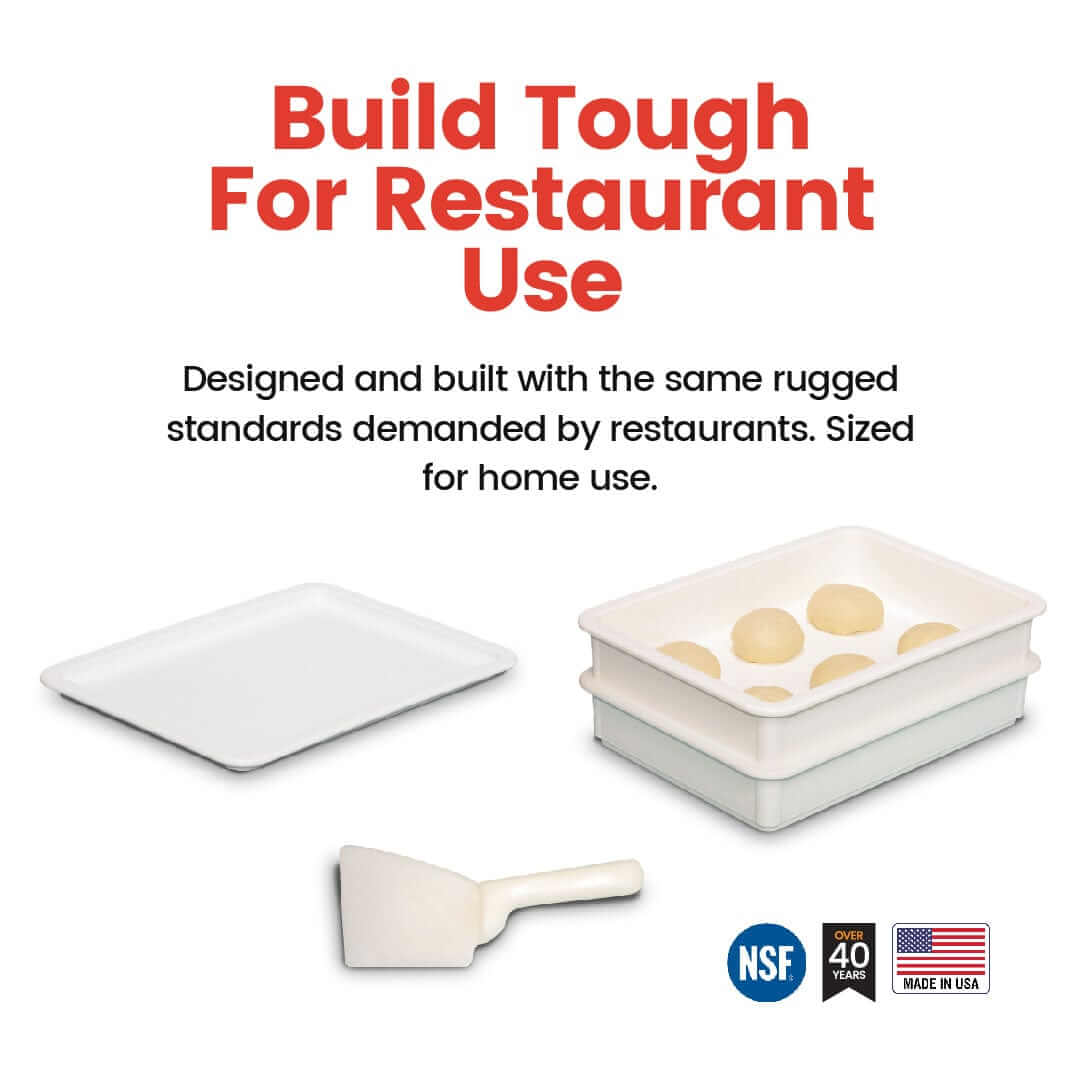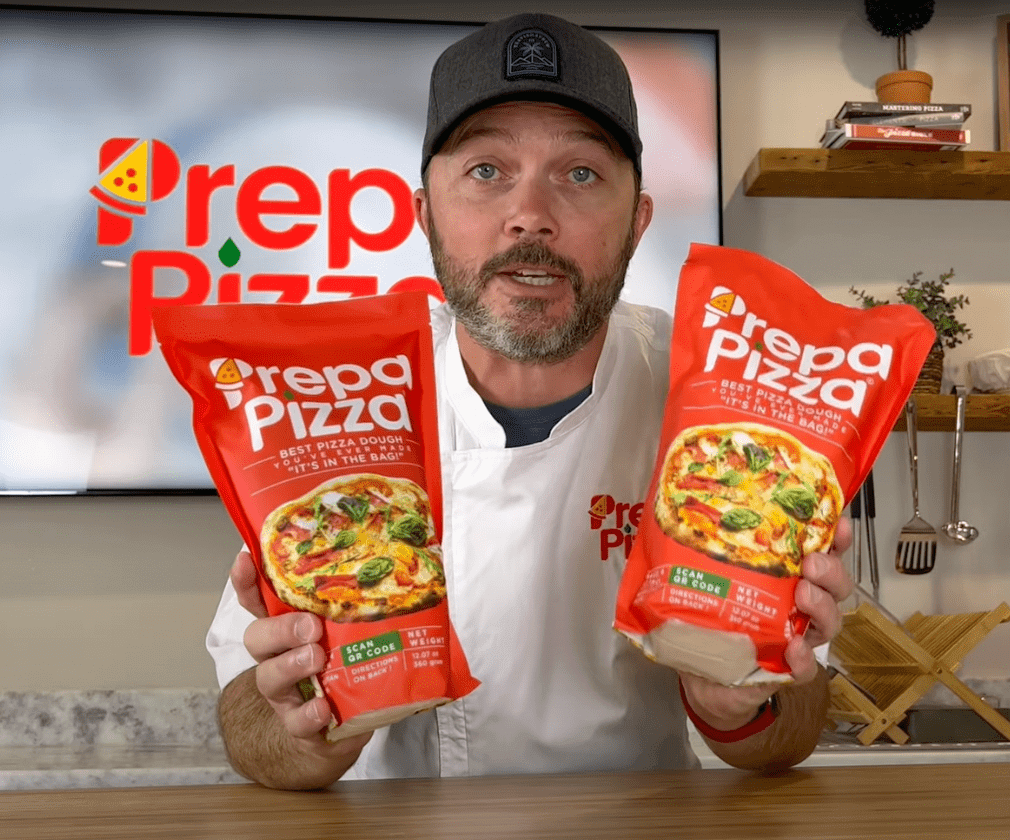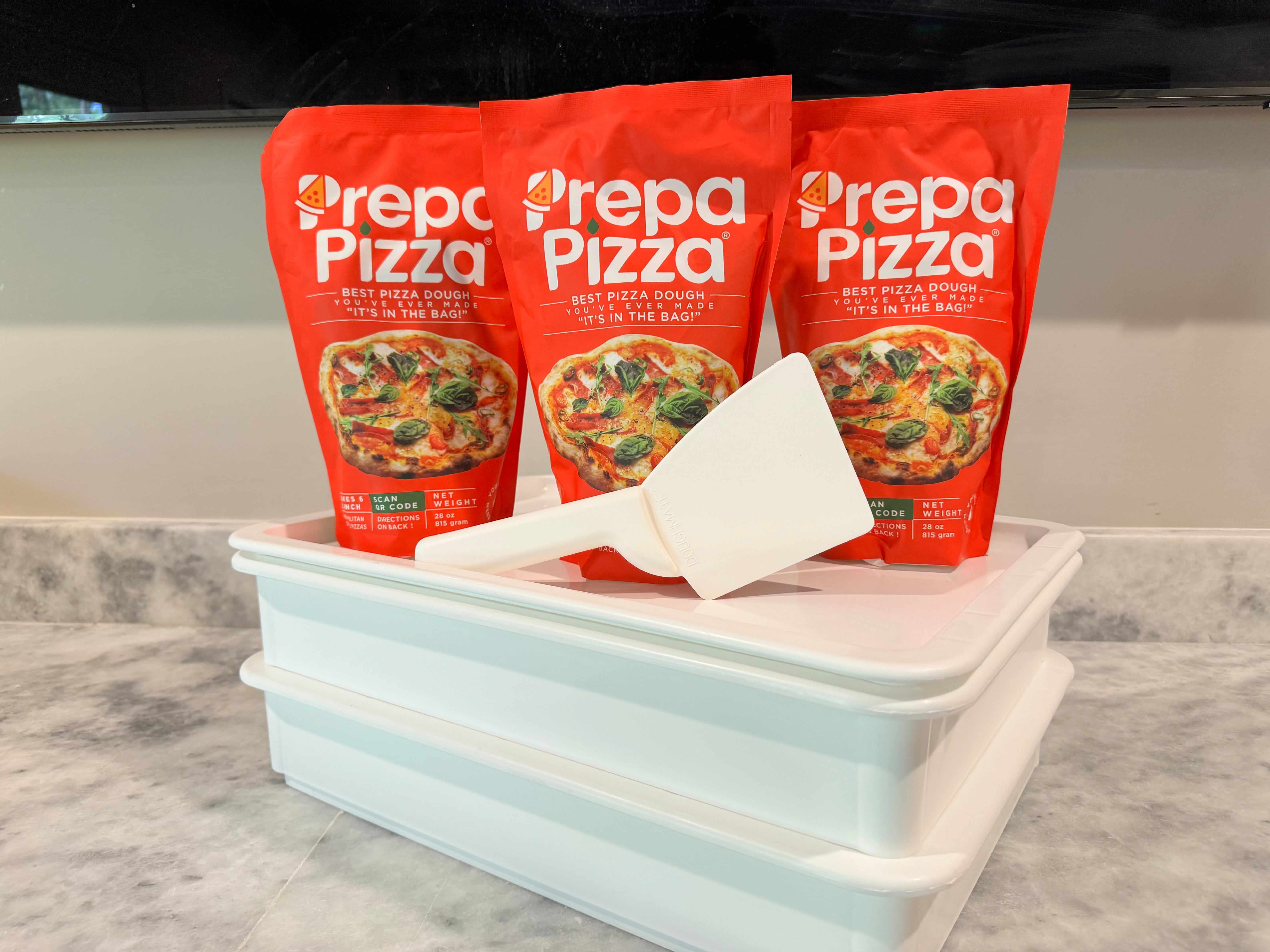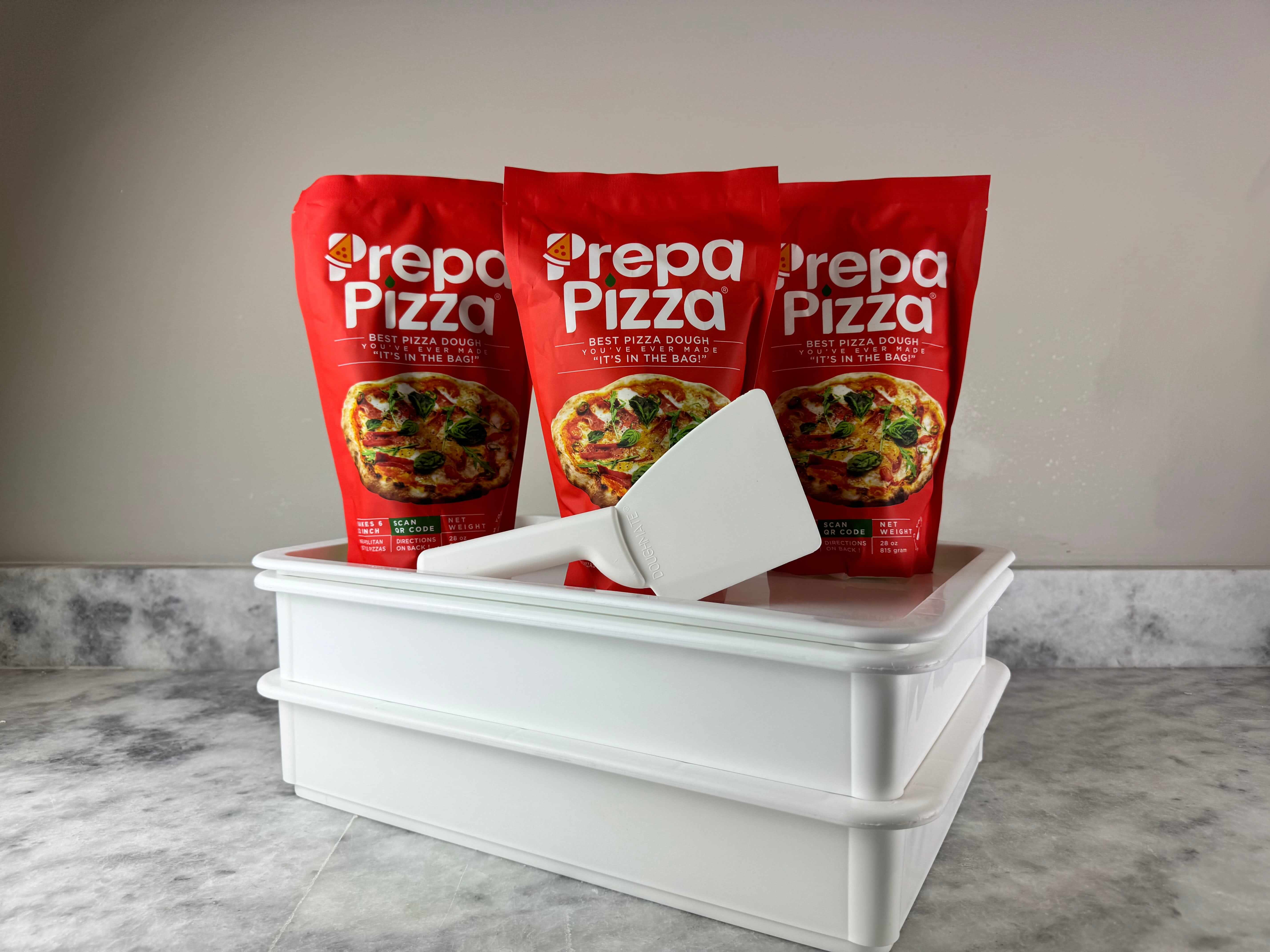
How to Use Premade Pizza Dough for Homemade Pizza Success
Making homemade pizza is easier than you think, especially with the convenience of premade dough. Using Prepa Pizza's premade dough allows you to create delicious pizzas at home without the hassle of making dough from scratch. With quality ingredients and a straightforward preparation process, you'll have a restaurant-style pizza ready in no time. You can explore the available options through the Prepa Pizza Dough Kit.
To get started, simply follow a few simple steps to stretch, top, and bake your pizza. You'll not only save time but also impress your family and friends with your homemade creations. There are endless possibilities when it comes to toppings, so you can tailor your pizza to suit any taste. Enjoy the satisfaction of crafting a perfect pizza at home with ease.
Choosing and Preparing Premade Pizza Dough
When it comes to making pizza at home, selecting and preparing the right premade dough is crucial for achieving that ideal crust. Utilizing Prepa Pizza's premade dough allows you to focus on creating delicious toppings rather than spending time making the dough from scratch. You can find high-quality options that are perfect for any pizza night.
Types of Premade and Store-Bought Dough
You have several options when it comes to premade and store-bought dough. The most common types include refrigerated dough, fresh dough, and frozen dough. Each type has its advantages and considerations.
- Refrigerated Dough: This option is convenient as it is often ready to use. Just roll it out and you're set.
- Fresh Dough: Typically found at local pizzerias, it may provide unique flavors and a slightly better texture.
- Frozen Dough: This can be stored longer but requires planning to thaw.
Prepa Pizza specializes in high-quality premade dough that offers a restaurant-style experience. For more information, check out Prepa Pizza's premade dough.
How to Handle Refrigerated and Fresh Dough
Handling refrigerated and fresh dough properly is essential for a great pizza. Start by letting the dough come to room temperature, which makes it easier to stretch.
- Remove from Packaging: Take the dough out of its packaging right away.
- Rest: Allow the dough to sit for about 30 minutes. This resting period helps gluten relax.
- Flour Your Surface: Lightly flour your work surface to prevent sticking while rolling or stretching.
Following these steps can lead to a more manageable dough that'll yield a better crust.
Letting Dough Rise and Rest
Letting your dough rise and rest is vital for achieving the perfect texture. If you're using fresh dough, you may need to allow it to rise a bit longer.
- Resting Time: Aim for at least 30 minutes. This helps the dough regain moisture and be more pliable.
- Rising Time: If your dough is supposed to rise, allow it to double in size. This process enhances the flavor and texture.
Feel free to adjust these timings based on the specific dough you choose. Proper technique makes a significant difference in the final result.
Shaping and Flavoring Your Pizza Crust
Shaping and flavoring your pizza crust is essential for achieving the perfect homemade pizza. The right techniques can enhance texture and taste, while premium dough, such as that from Prepa Pizza, ensures a consistently enjoyable experience.
Techniques for Stretching and Rolling
To shape your pizza crust, you have two main options: stretching and rolling. Start by flouring your work surface and the dough to prevent sticking. If you prefer stretching, gently press the dough with your fingers from the center outward, allowing it to expand naturally. Turn the dough frequently to maintain a circular shape.
For rolling, use a rolling pin, applying even pressure to achieve the desired thickness. Aim for about ¼ inch for a standard crust. Remember, avoid overworking the dough; this can make it tough. The goal is a crust that’s easy to handle and has room for toppings without tearing.
Creating a Crispy Crust at Home
A crispy crust is a hallmark of great pizza. To enhance crispiness, preheat your oven to the highest temperature, typically around 475°F to 500°F. Baking your pizza on a hot surface is crucial. Use a pizza stone or a baking sheet, placing it in the oven while it heats.
For added texture, consider par-baking your crust for a few minutes before adding toppings. This initial bake firms up the dough, preventing sogginess. Additionally, you can sprinkle a little cornmeal on the surface where you place the pizza, further improving crunchiness.
Brushing with Olive Oil or Flavorings
Brushing your crust with olive oil before baking is an excellent way to elevate flavor. Start by pouring a small amount of olive oil into a bowl. Use a pastry brush to apply a thin, even layer to the outer edge of the dough. This not only adds flavor but also helps achieve a golden-brown finish.
You can infuse the olive oil with garlic, herbs, or spices for added depth. Consider mixing minced garlic or dried oregano into the oil for an aromatic boost. This simple step significantly enhances the overall taste of your homemade pizza, making it more appealing.
Topping Selection and Layering Techniques
Choosing the right toppings and layering them properly is essential for a delicious homemade pizza. With Prepa Pizza’s premium quality premade dough, you can create a restaurant-quality pizza right at home. Let’s explore sauces, cheeses, and topping ideas to elevate your pizza experience.
Choosing Sauce: Tomato, White, Pesto, and Barbecue
The sauce serves as the foundation of your pizza. Tomato sauce is the classic choice, offering a tangy flavor that complements many toppings. Consider using a white sauce for a creamier base, which pairs well with vegetables and seafood.
Pesto provides a vibrant flavor, especially effective with grilled vegetables and chicken. For a unique twist, try barbecue sauce; it adds a smoky and sweet profile, great with chicken and red onions. Each sauce changes the overall flavor, so think about your toppings when making your choice.
Best Cheeses for Homemade Pizza
Cheese plays a pivotal role in achieving the perfect pizza. Mozzarella cheese is a traditional favorite for its meltability and mild flavor. For a richer taste, blend in provolone or parmesan.
Consider using a blend of cheeses; a mixture of mozzarella, gouda, and parmesan creates a deliciously complex flavor. Don’t forget extras like ricotta for dolloping or feta for crumbling on top. Each type of cheese contributes to the texture and taste profile of your pizza.
Creative and Classic Pizza Topping Ideas
Toppings are where you can truly personalize your pizza. Start with classic combinations like pepperoni, mushrooms, and bell peppers. For those looking to be adventurous, add roasted garlic, arugula, or sun-dried tomatoes.
Vegetarian options can shine with toppings such as spinach, artichokes, or a variety of cheeses. For meat lovers, consider smoked sausage, bacon, or grilled chicken. Mix and match these toppings for unique flavors, keeping in mind to balance heavy and lighter toppings for a well-structured pizza. Choose wisely to create a masterpiece that complements Prepa Pizza’s exceptional dough.
Baking Methods and Equipment Explained
When using Prepa Pizza’s premade dough, selecting the right baking methods and equipment is essential for achieving a delicious pizza. Mastering oven temperatures, baking time, and the tools you use will enhance the flavor and texture of your homemade pizza.
Oven Temperatures and Baking Time
To get the best results, preheat your oven to 475-500°F (245-260°C). This high temperature is crucial for achieving a crispy crust. Baking at lower temperatures can yield soggy results.
Bake your pizza for 10-15 minutes, depending on the thickness of the crust and the toppings. Keep an eye on it after the first 10 minutes to prevent overbaking. If the cheese bubbles and turns golden, it’s a good indicator that your pizza is ready.
Always use a reliable oven thermometer to ensure accuracy. An incorrect temperature can drastically affect the crust's texture and overall pizza quality.
Using Pizza Stones, Baking Sheets, and Pans
Choose your equipment wisely. A pizza stone is highly recommended if you seek a crisp crust. Preheat the stone in the oven for at least 30 minutes before placing the pizza on it. This helps retain heat for even cooking.
If you don’t have a pizza stone, a baking sheet or a baking pan can work effectively. For a baking sheet, line it with parchment paper to prevent sticking. If using a pan, lightly grease it to facilitate easy removal.
Remember, the thicker your crust, the longer it may need to bake. Adjust your timing accordingly to avoid undercooking.
Tips for Evenly Baked and Golden Crusts
To achieve an evenly baked pizza, avoid overloading it with toppings. Too many ingredients can lead to uneven cooking and soggy spots. Spread your sauce and toppings evenly across the dough.
Utilize olive oil on the crust’s edges before baking. This helps to produce a beautiful golden color and enhances flavor.
Consider rotating the pizza halfway through the baking process. This ensures that every side receives equal heat, preventing one part from cooking faster than another.
With the right techniques, using Prepa Pizza’s premade dough allows you to create pizzas that are truly restaurant-quality right at home. For more information on how to achieve the best results, check out the Prepa Pizza Dough Kit.
Serving, Slicing, and Pizza Night Inspiration
When preparing to serve your homemade pizza, focus on presentation, the slicing technique, and creating an inviting atmosphere for pizza night. Using high-quality ingredients, such as Prepa Pizza's premade dough, ensures that your pizza is not only delicious but also visually appealing.
Finishing Touches for Best Homemade Pizza
To elevate your pizza, consider the finishing touches that can make a significant difference. Drizzling a little extra virgin olive oil over the pizza after baking enhances flavor. Fresh herbs like basil or arugula add a pop of color and freshness.
For cheese lovers, adding a sprinkle of freshly grated Parmesan or a dash of red pepper flakes can provide depth. Ensure your pizza has cooled for a few moments before slicing for cleaner cuts. Use a sharp pizza cutter to achieve uniform slices, making it easier for your guests to dig in.
The Pizza-Making Process from Dough to Table
Start with Prepa Pizza's premade dough to streamline the pizza-making process. Preheat your oven to the appropriate temperature, usually around 475°F (245°C) for optimal crust crispiness. Roll out the dough into your desired shape on a floured surface.
Add your sauce, ensuring an even layer that doesn't saturate the dough. Layer high-quality ingredients, like fresh mozzarella, pepperoni, or seasonal vegetables. Bake according to instructions or until the crust is golden and cheese is bubbly. The aroma that fills your kitchen as it bakes is irresistible, setting the stage for an enjoyable meal.
Theme Ideas: Classic, BBQ Chicken, and Gluten-Free
Creating themed pizza nights can add excitement. For a classic night, opt for traditional Margherita with tomatoes, mozzarella, and basil. For something bold, consider BBQ chicken pizza, topped with grilled chicken, BBQ sauce, and red onions.
If you have gluten-sensitive guests, offer a gluten-free pizza using a dedicated gluten-free dough option. Pair each theme with appropriate sides, like fresh salads or dips, to complement the flavors. Set the scene with fun decorations or music that aligns with your theme, making it a memorable event for everyone involved.
Frequently Asked Questions
Using premade pizza dough can be straightforward and convenient. Below are common inquiries regarding preparation, cooking, and storage to help you achieve the best results with Prepa Pizza's premade dough.
What are the steps for preparing premade pizza dough at home?
To prepare Prepa Pizza's premade dough, start by preheating your oven to the temperature indicated on the packaging. Sprinkle flour on a clean surface, then roll out the dough to your desired thickness and shape. Transfer it to your pizza stone or baking sheet for further handling.
What temperature should pre-made pizza dough be cooked at for optimal results?
For the best results, cook Prepa Pizza's dough at 475°F (245°C). This high temperature helps achieve a crispy crust while ensuring the toppings cook thoroughly.
Is it necessary to let store-bought pizza dough rise before baking?
You don’t need to let Prepa Pizza's dough rise before baking. Since it's premade, it’s ready to use right after rolling it out, making it a time-saving option for your pizza night.
How long should store-bought pizza dough be pre-baked before adding toppings?
Pre-bake the dough for about 5-7 minutes before adding your toppings. This ensures a firmer base, which helps prevent sogginess once you add sauce and additional ingredients.
Can store-bought pizza dough be used for recipes other than pizza, and if so, which?
Yes, you can use Prepa Pizza's dough for various recipes, including calzones, breadsticks, and even dessert options like cinnamon rolls. Its versatility allows for creative culinary adventures beyond traditional pizza.
How should premade pizza dough be stored if not used immediately?
If you’re not using the dough right away, store it in the refrigerator. Wrap it tightly in plastic wrap or place it in an airtight container to keep it fresh. If you're not planning to use it within a few days, consider freezing it for longer storage.




